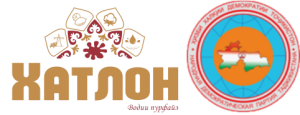Jaloliddini Balkhi
JALOLIDDINI BALKHI DISTRICT – A TRACE OF THE TRACELESS ANCIENT HALEVARD
A brief historical information. Jaloliddini Balkhi district is one of the biggest districts of the Khatlon region of the Republic of Tajikistan. The district was established on March 21, 1933, being first named “Kaganovichobod”, and later named “Kolkhozobod”. On July 19, 2007 with the Decree No.203 of National Assembly of Supreme Assembly of the Republic of Tajikistan dated March 3, 2016, for the memory of eminent poet of Tajik and Persian classical literature Mawlana Jalal ad-Din Balkhi (also known as Rumi) the district was named Jaloliddini Balkhi.
Historians studying and researching Middle Ages have found that the old name of the district was Halevard. Halevard was one of the two bigger cities of the Land of Vakhsh during the Samanid empire, and having numerous citadels, cities, caravansaries, and bartons, was bigger than Hulbuk city population-wise.
In the 8th century Halevard was occupied with difficulty but inflicting great damages by the Arab conquerors, and was renamed to Kofirkalaa (Infidel castle). Ruins of Halevard were found in 1960th years of 20th century in the center of Jaloliddini Balkhi district, but soon the archaeological activities were stopped, and have not been resumed since then.
Jaloliddini Balkhi district being located from the south and east part of the republic between Kiziltumshuk mountain and small river Kumsangir, has borders with Bokhtar, Vakhsh, Panj, Farkhor, Jayhun and Dusti districts of Khatlon region. The district has an area of 905 square kilometers. The district is situated on the low-height mountain ranges and valleys, and its distance from the center of the region — Bokhtar city is 32 kilometers, and from the center of republic, Dushanbe city, is 132 kilometers. The district is divided into 8 town and rural communities: Balkh and Guliston towns, rural communities of Halevard, Madaniyat, Navobod, Kalinin, Frunze and Uzun. There are 71 streets and 85 villages in the district. The Vakhsh river and Kumsangir channel cross the district.
Attractive travelling areas. Tourists are mostly attracted by the ruins of the historical monuments like Qalaai Laghmon, Qalaai Halevard, Qalaai Urtabuz-1, Qalaai Urtabuz-2, as well as by other sight-seeing places, like statue of Sorrowful mother and busts of five heroes of the Second World War, cultural museum of Mawlana Jalal ad-Din Balkhi, statues of the Unknown Soldier, Karl Marx, 4 statues of Vladimir Lenin, bust of Omar Hayyam, bust of hero of labor Sirojiddin Isoev, bust of veteran of labor М. Hafizov, bust of veteran of labor Н. Begov, memorial board of Sirojiddin Isoev, pedestal of Golden Crown, and National Flag, which are located some in the center and others in town and rural communities of the district.
Infrastructure service. The district is passed by the arterial rail roads like “Moscow – Termez – Qurgonteppa”, Yovon – Jaloliddini Balkhi – Qurgonteppa –Dushanbe, and also by the state motor roads “Dushanbe – Panj”, “Termez –Shahritus – Jaloliddini Balkhi – Vakhsh”. Since 1978 a rail road station is available that interlinks passenger and freight transports both inside the country and on international level. There are Muslim mosques and also Christian church is available in the district. Apart from that, there are 9 markets, 6 cafes, 3 restaurants, 2 hotels, 63 separate selling shops, 2 hotels and 1 passenger terminal are ready to use in the district.
Since 1985 a history and regional studies museum functions in the area, which exhibits 1846 historical and cultural items. Office and study rooms of veterans of labor Н. Begov, S. Jumaev and Т. Isankulov are also open for visitors as social museums. Cultural hall in the village Halevard with 540 seats and Cinema Palace in Balkh town with 360 seats keep their doors open for cultural events in the district.
Folk craftsmanship and skills. Jaloliddini Balkhi district is well-known for its various folk crafts like carpet weaving, atlas and adras weaving, carving of wooden dishes, cradle making, blacksmithing, dutor making (musical instrument) and gulduzi (embroidering with the gold color threads).
The particularities of the district. Jaloliddini Balkhi district is well-known for its laborious people, particularly, cotton farmers, who cultivate “white gold”, which is another name for the cotton. District collects the most amount of cotton per season, and the lands allocated for cotton production are more in amount as compared with other districts.
Search
Archives
